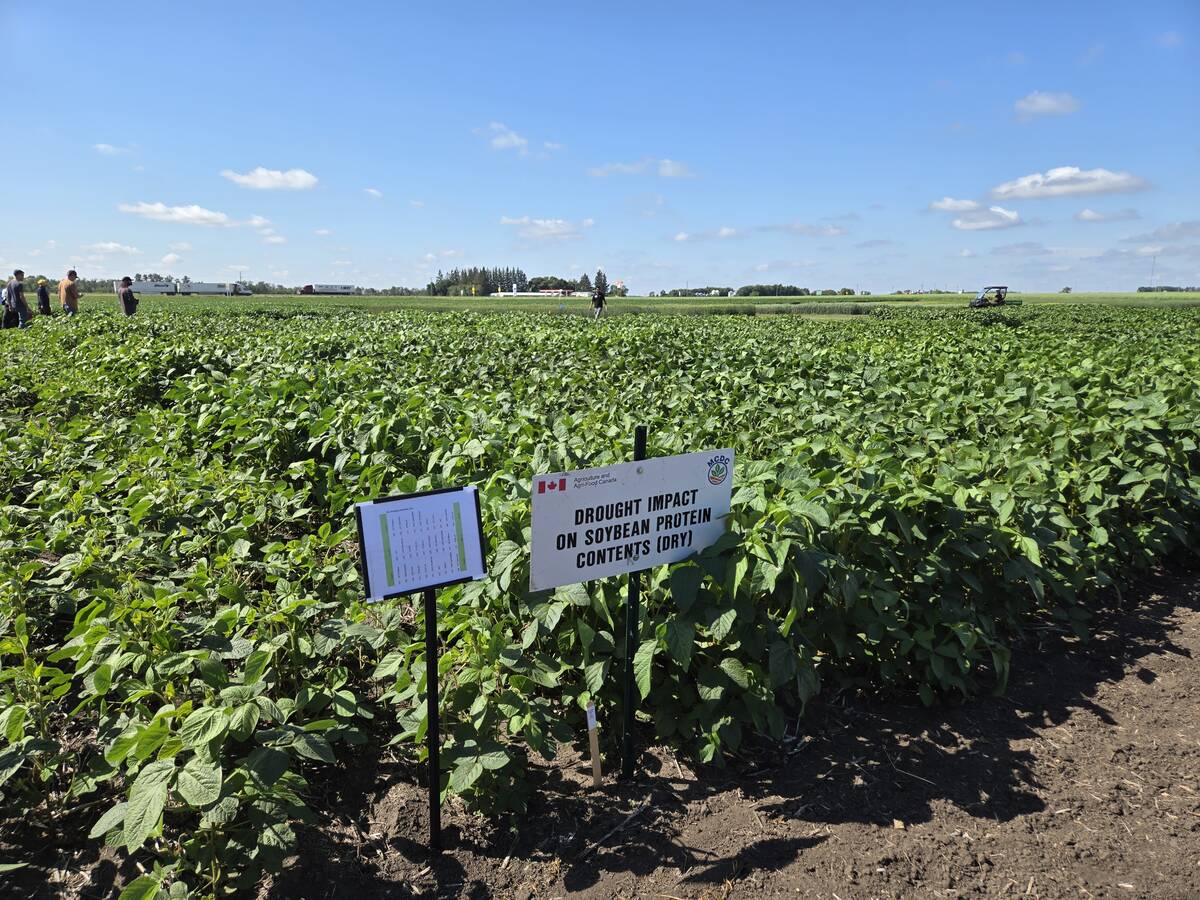The government’s new “product of Canada” labelling rules take effect Jan. 1, 2009, and food industry players are complaining the change is being rushed and few products will qualify as Canadian.
Agriculture minister Gerry Ritz announced in Cornwall, Ont., July 15, that to qualify for a “product of Canada” label on any item produced after Dec. 31, all or virtually all of the food content must have been grown in Canada.
Currently, the requirement is that if 51 percent of the cost of the product, including packaging, is incurred in Canada, it can be called a product of Canada.
Read Also

Carberry field day looks for agriculture solutions
Manitoba farmers explored research solutions for resilient crops, perpetual agronomic issues and new kinds of agricultural products at a field day at the Manitoba Crop Diversification Centre in Carberry on Aug. 6.
Ritz said the change, first announced in May by prime minister Stephen Harper, is designed to give consumers more truth in labelling.
“By the end of the year, if a food is labelled ‘product of Canada,’ this government is making sure that food is Canadian inside and out,” he said.
Products containing imported ingredients can be labelled “made in Canada from imported ingredients.”
But some food industry leaders say it is not as simple as Ritz suggests.
Food processors and manufacturers who cannot guarantee a 12-month supply of the Canadian ingredients they need will be loathe to use “product of Canada” labels part of the year and a different label for a few months. It would be costly and cumbersome.
Since most food products contain sugar that is overwhelmingly imported as raw cane sugar and then refined in Canada, it would exclude sugar-containing products except those using prairie-produced sugar beet product.
“You really have to wonder what food products will qualify for ‘product of Canada’ designation,” said Food Processors of Canada president Chris Kyte.
“It is an attractive idea and we support it in general but I’m not sure how much thinking went into it about the implications. And for my members, Jan. 1 is too soon. They have existing label supplies, problems with not being able to access Canadian produce all year and all the costs will be absorbed by them.”
Sandra Marsden, president of the Canadian Sugar Institute, said the change will be a major problem for her industry.
The Canadian sugar refining industry has been able to call its production “product of Canada” but now will have to be labelled “refined in Canada.”
She said “made in Canada from imported ingredients” would be misleading since Canada does not import refined sugar.
“The change significantly impacts food processors who use Canadian refined sugar in their products,” she wrote in an e-mail. “So now, many products will no longer qualify for a ‘product of Canada’ claim, even wholly grown products such as sweetened dairy products, grains and processed fruits.”
Don Jarvis, president of the Dairy Processors’ Association of Canada, said it is not a huge issue for his industry since most dairy products are made with Canadian milk but there is confusion about whether imported additives will make the products less than Canadian.
“Frankly, we don’t know yet,” he said. “I guess it depends on how they define ‘virtually all’ in their rules.”














